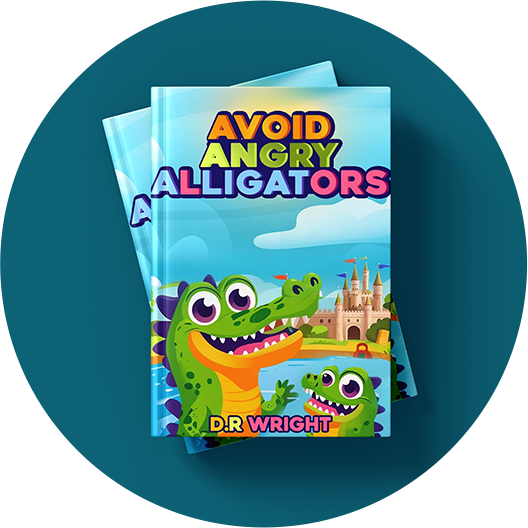Have you ever come across a story that warmed your heart, made you smile, and taught you something meaningful—all in a few pages? That’s the magic of Dianne Rigby Wright, an inspiring Children’s Book Author whose stories spark imagination and kindness in young readers around the world.
Her writing is more than just entertainment—it’s a journey into a world where courage, friendship, and discovery thrive. Like a gentle guiding light, Dianne’s books remind children that even the smallest voice can make a big difference.
In this article, we’ll explore the life, vision, and remarkable impact of Dianne Rigby Wright as a Children’s Book Author, uncovering the inspiration behind her beloved stories and the lessons she hopes to leave with future generations.
1. Early Life and Inspiration
Every great storyteller begins with a spark—a moment that ignites a lifelong passion. For Dianne Rigby Wright, that spark was her deep love for books as a child. Growing up surrounded by stories that whisked her away to far-off lands, she found comfort and courage in the pages of children’s literature.
Her childhood was filled with imagination. She often spent afternoons creating tales for her dolls, weaving adventures that mirrored the stories she adored. Little did she know that these early playtime narratives would lay the foundation for her future as a celebrated Children’s Book Author.
2. Journey into Writing
Becoming a writer wasn’t an overnight decision—it was a journey of self-discovery. Dianne’s early adult life was dedicated to nurturing creativity, whether through teaching, storytelling, or community work.
Her connection to children deepened her understanding of their dreams, fears, and boundless curiosity. Inspired by her experiences, she began writing short stories for her students, noticing how their eyes lit up whenever she read aloud. That joy became her motivation to write full-time.
3. The Birth of a Children’s Book Author
Transitioning from storyteller to published author was both exciting and challenging. Dianne faced rejection letters, long nights of rewriting, and the occasional doubt—but her belief in the power of storytelling never wavered.
When her first book was published, it opened a new chapter in her life. The heartfelt response from children and parents validated her calling as a Children’s Book Author. She realized she wasn’t just writing stories—she was shaping hearts and nurturing minds.
4. Writing Style and Themes
Dianne Rigby Wright’s writing style is warm, vivid, and deeply human. Her words dance off the page, often wrapped in humor, adventure, and emotional truth.
Her recurring themes include:
- Friendship and empathy – reminding children that kindness matters.
- Courage and discovery – showing that fear can lead to growth.
- Family and belonging – celebrating love in all its forms.
Like a painter using words instead of colors, she brings her characters to life in ways that children can relate to—and adults can appreciate.
5. Iconic Books by Dianne Rigby Wright
Over the years, Dianne has written several enchanting titles that capture the hearts of young readers. While each book stands on its own, all share a unifying thread of imagination and heart.
Some of her most popular works include:
- “The Magic Garden Path” – A tale of friendship and bravery in a world where flowers whisper secrets.
- “Tilly and the Talking Tree” – A moving story about listening to nature and finding one’s purpose.
- “The Little Cloud That Couldn’t Cry” – A beautiful metaphor for emotional resilience.
Each of these books embodies her mission—to inspire empathy, self-discovery, and creativity in children.
6. Lessons Hidden in Her Stories
Behind every whimsical plot lies a powerful message. Dianne’s stories often act as gentle guides, teaching children valuable life lessons without feeling preachy.
For example, “The Little Cloud That Couldn’t Cry” encourages emotional awareness—helping kids understand that it’s okay to feel sad or different. Meanwhile, “Tilly and the Talking Tree” subtly promotes environmental care and mindfulness.
Through storytelling, she gives young readers the tools to navigate the world with compassion and curiosity.
7. The Role of Imagination in Her Work
Imagination is the heartbeat of Dianne Rigby Wright’s writing. To her, stories are like keys—they unlock worlds where anything is possible.
She once described imagination as “the bridge between reality and possibility.” Her stories invite children to cross that bridge and see that magic exists not only in fairy tales but also in everyday life—within friendships, kindness, and courage.
By nurturing imagination, Dianne helps children see their own potential to create, dream, and explore.
8. How Dianne Connects with Young Readers
One of the reasons Dianne’s books resonate so deeply is her connection with her audience. She frequently visits schools, libraries, and community centers to read her stories aloud, encouraging kids to share their thoughts and dreams.
Her warm personality makes children feel heard and valued. Whether through storytelling sessions or interactive workshops, she transforms reading into an adventure.
Her philosophy? “If a story makes a child smile, think, or dream bigger—that’s success.”
9. The Challenges of Writing for Children
Writing for children might seem simple, but it’s one of the most challenging forms of storytelling. Dianne often says that “children are the most honest critics.”
She must balance simplicity with substance—keeping young readers entertained while conveying meaningful messages. Finding that harmony requires patience, empathy, and a deep understanding of how children see the world.
Yet, it’s precisely this challenge that fuels her creativity.
10. Dianne’s Creative Process
Ever wondered how a Children’s Book Author turns an idea into a magical story? Dianne’s creative process is both structured and intuitive.
She starts with a single question—“What if?” From there, she builds her world around that spark of curiosity. Characters emerge, settings take shape, and soon, the story finds its rhythm.
Her process often includes:
- Observation: Watching how children interact with their surroundings.
- Reflection: Drawing from real-life emotions and experiences.
- Revision: Refining her drafts until every word shines.
Her attention to detail ensures that each story feels authentic, meaningful, and delightful to read aloud.
11. Influence on the Next Generation
Through her stories, Dianne Rigby Wright has influenced countless young readers. Many of her fans have grown up to become teachers, writers, and artists themselves—proof of her lasting impact.
Her books encourage children to dream boldly, stand up for what’s right, and see the beauty in differences. In a world often clouded by distraction, her stories remind us that wonder still exists.
12. Collaborations and Literary Impact
Dianne has collaborated with illustrators, educators, and literacy programs to promote reading among children. Her partnerships have brought her stories into classrooms and libraries worldwide.
Her influence extends beyond her books. She actively supports initiatives that provide access to literature for underprivileged children, believing that “every child deserves the gift of imagination.”
13. Awards and Recognition
Dianne’s dedication to children’s literature hasn’t gone unnoticed. She has received numerous awards for her storytelling and community impact.
While accolades are gratifying, she often says the greatest reward is seeing a child’s eyes light up when they read her stories.
Her recognition includes literary honors, community service awards, and features in educational publications that celebrate her contribution as an outstanding Children’s Book Author.
14. Advice for Aspiring Authors
For those who dream of writing for children, Dianne offers simple but powerful advice:
“Write from your heart, not your head. Children can always tell the difference.”
She encourages aspiring authors to:
-
Read widely – learn from diverse voices.
-
Listen to children – their questions and insights often inspire the best stories.
-
Be patient – great stories take time to grow.
Her message reminds us that storytelling is not about perfection—it’s about connection.
15. Dianne Rigby Wright’s Legacy
Dianne’s legacy lies not just in her books but in the countless young minds she has inspired. Her stories continue to plant seeds of empathy, courage, and curiosity in readers around the world.
Like a gentle breeze guiding a kite, her influence helps children soar toward their dreams.
Through her writing, she proves that the heart of a Children’s Book Author beats not only for words but for the children who read them.
Conclusion
Dianne Rigby Wright stands as a shining example of what it means to be a true Children’s Book Author—one who writes not just for entertainment but to enrich the lives of young readers.
Her stories are timeless treasures, carrying lessons that resonate far beyond childhood. In a world that often rushes past simple joys, her writing reminds us to slow down, imagine, and believe once more in the magic of stories.
FAQs
1. What inspired Dianne Rigby Wright to become a Children’s Book Author?
Dianne’s love for storytelling and her deep connection with children inspired her to create stories that nurture imagination and kindness.
2. What themes does Dianne Rigby Wright explore in her books?
Her stories often focus on empathy, courage, environmental awareness, and emotional growth—helping children navigate life with confidence and compassion.
3. How does Dianne Rigby Wright engage with her readers?
She frequently visits schools and libraries, reading her stories and encouraging children to express their own ideas through writing and art.
4. What makes her writing style unique?
Dianne’s writing combines simplicity with depth, blending relatable characters and vivid imagery to create stories that both entertain and teach.
5. What advice does she give to aspiring Children’s Book Authors?
She encourages writers to follow their passion, stay patient, and always write with authenticity and heart.



